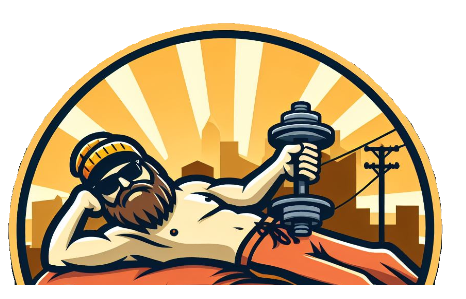Cycling for Health and Pleasure
Cycling is one of the most enjoyable and effective ways to improve overall health. Whether you’re looking for a fun activity, an alternative mode of transport to gas guzzlers, or a serious fitness routine, cycling has something to offer everyone.
It is not just a mode of transportation; it is a lifestyle choice that brings physical, mental, and emotional benefits.
Among its many advantages, cycling is particularly beneficial for cardiovascular health, making it a fantastic option for anyone looking to stay active while having fun.
Boost Your Cardiovascular Health
One of the most compelling reasons to take up cycling is its positive impact on heart health.
Cardiovascular fitness is crucial for overall well-being, as it helps maintain a strong heart, reduces the risk of disease, and keeps the body functioning efficiently.
Cycling is a fantastic form of aerobic exercise that gets your heart pumping, improves circulation, and enhances endurance.
The Health Benefits of Cycling
Cycling offers numerous advantages, particularly when it comes to heart health and overall fitness. Here’s why it should be part of your routine:
- Strengthens the Heart: Regular cycling increases your heart rate and helps strengthen the heart muscle, improving its efficiency in pumping blood throughout the body. This reduces the risk of heart disease, high blood pressure, and stroke.
- Improves Circulation: Cycling stimulates blood flow, ensuring that oxygen and essential nutrients reach your muscles and organs effectively. This helps lower the risk of blood clots and improves overall vascular health.
- Burns Calories Effectively: Cycling is an excellent way to burn calories and manage weight. Depending on the intensity of your ride, you can burn anywhere from 300 to 700 calories per hour, making it an effective workout for weight loss and muscle toning.
- Reduces Stress and Enhances Mood: Exercise, including cycling, triggers the release of endorphins, which are natural mood boosters. Regular cycling can help reduce stress, anxiety, and depression, making you feel happier and more energized.
- Strengthens Muscles and Joints: While cycling primarily targets the legs, it also engages the core and lower back muscles, promoting better posture and strength. Additionally, since it is a low-impact exercise, it reduces strain on the joints compared to high-impact activities like running.
Incorporating Cycling into Your Routine
Cycling is highly adaptable and can fit into anyone’s lifestyle. Whether you prefer riding outdoors or using a stationary bike at home or the gym, there are multiple ways to enjoy the benefits of cycling.
- Start with a manageable schedule: Aim for 20 to 45 minutes of cycling three to five times a week. Beginners can start with shorter rides and gradually increase duration and intensity as their endurance improves.
- Vary your cycling routine: To keep things interesting, mix different types of cycling. Try casual rides through scenic routes, intense hill climbs, or even high-intensity interval training (HIIT) sessions on a stationary bike.
- Adjust intensity based on fitness level: If you’re a beginner, start at a moderate pace and focus on consistency rather than speed. As you build stamina, you can incorporate sprints, hill climbs, and resistance training to challenge yourself.
- Use cycling for commuting: If possible, consider cycling to work or running errands on your bike instead of using a car. This helps incorporate exercise into your daily routine while reducing your carbon footprint.
- Join a cycling group: Riding with friends or joining a local cycling club can make the experience more enjoyable and motivating. It also offers an opportunity to socialize while staying active.
Equipment Needed to Get Started:
Cycling is an accessible sport with minimal equipment requirements. Here’s what you need to get started:
- A Bicycle: Choose a bike that suits your needs and preferences. Road bikes are great for speed and endurance, mountain bikes are ideal for off-road adventures, and hybrid bikes offer a balance of both. If you prefer indoor workouts, a stationary bike is a convenient alternative.
- Helmet and Safety Gear: A good-quality helmet is essential for protecting your head in case of falls or accidents. Additional safety gear like gloves, knee pads, and reflective clothing can enhance safety, especially for night riding.
- Comfortable Clothing and Shoes: Wear breathable, moisture-wicking clothes for comfort. Padded cycling shorts can help reduce discomfort on long rides, and proper cycling shoes enhance efficiency by providing better grip and support.
- Hydration and Nutrition: Bring a water bottle to stay hydrated during your rides. If cycling for extended periods, pack some energy snacks to maintain stamina.
The Future of Bike Riding
AI, Innovation, and the Rise of Japanese Small-Wheel Bikes
Cycling has always been a blend of adventure, fitness, and sustainable transport, but the industry is now at the cusp of a revolution.
Advances in artificial intelligence (AI), new manufacturing techniques, and the rising popularity of innovative designs—such as Japanese bikes with smaller wheels—are shaping the future of mountain bikes, street bikes, and bicycle machines.
Let’s take a look into what’s next for bike enthusiasts.
AI and the Future of Cycling
AI is set to redefine biking in several ways, enhancing performance, safety, and even the riding experience itself.
- Smart Navigation & Assistance – AI-driven cycling computers and apps are already providing real-time data on routes, traffic, and road conditions. Future advancements could include AI-powered bike assistants that suggest optimized routes based on weather, terrain, and user preference.
- Predictive Maintenance – AI sensors will monitor bike components for wear and tear, alerting riders when maintenance is needed before a breakdown occurs.
- Adaptive Performance Optimization – Smart bikes are emerging with AI-driven gear shifting and suspension adjustments that adapt in real time based on speed, incline, and riding style, making mountain and street biking smoother and more efficient.
- Safer Roads with AI Integration – AI-powered accident detection, anti-theft systems, and even self-balancing mechanisms will make cycling safer, particularly in urban environments.
The Evolution of Mountain Bikes
Mountain bikes continue to evolve with better suspension, lighter frames, and more durable materials.
With AI-enhanced riding systems, these bikes will soon be able to adjust suspension settings dynamically, ensuring the best control over rugged terrain. Moreover, electric mountain bikes (e-MTBs) are incorporating AI to optimize battery efficiency and assist riders based on terrain difficulty.
A standout trend is the rise of Japanese mountain bikes featuring smaller wheels. These bikes are designed for increased maneuverability, allowing riders to navigate tight trails more easily. They are particularly popular among urban riders who want a compact, durable bike that performs well both on and off-road.
The Future of Street Bikes
Urban cycling is booming as cities promote greener transport, and AI will only accelerate this shift. Expect to see AI-integrated traffic monitoring systems that communicate with bikes, preventing accidents and optimizing travel times.
Additionally, electric street bikes with AI-powered speed control and auto-gearing will make commuting more accessible to all riders, regardless of experience.
In Japan, the trend of smaller-wheeled street bikes is catching on fast. These bikes are favored for their portability, lightweight frames, and improved agility in crowded city spaces.
Riders appreciate the ability to fold and store them easily, making them ideal for mixed-mode transport (cycling + public transit). The shorter wheelbase also enhances acceleration, making them perfect for quick urban commuting.
The Impact on Bicycle Machines and Fitness Equipment
The fitness world is also embracing AI-driven bicycle machines, revolutionizing indoor cycling experiences.
Companies are incorporating AI into smart trainers and stationary bikes, offering real-time resistance adjustments based on user performance.
Virtual cycling environments, powered by AI, will provide immersive experiences that mimic real-world terrain and adapt dynamically to the rider’s effort.
The Future is Smart and Adaptable.
The future of biking is fast, smart, and highly adaptable. AI is bringing about smarter navigation, predictive maintenance, and safer riding, while the innovation of Japanese small-wheel bikes is revolutionizing mountain and street biking.
Whether you’re hitting rugged trails, navigating city streets, or training indoors, the next generation of bikes is designed to make riding more efficient, safer, and enjoyable.
One thing is certain—cycling is no longer just about pedaling; it’s about embracing the tech-powered revolution on two wheels.
Ride Towards a Healthier Lifestyle
Cycling is still an excellent way to stay fit, improve cardiovascular health, and boost mental well-being. It is an activity that accommodates all fitness levels and lifestyles, making it easy to incorporate into daily routines.
Whether you ride outdoors to enjoy fresh air and scenic views or prefer the controlled environment of a stationary bike, cycling offers a fun, effective, and sustainable way to stay active.
If you’re looking for a way to improve your health while having fun, hop on a bike and start pedaling your way to a healthier, happier you!
And the power of walking should not be forgotten. You can read more here about my favorite exercise, “walking for weight loss“
Steve

Please support me so I can bring you more posts like this. And follow me on YouTube for the latest health news
Some links on this site may be affiliate links, and if you purchase something through these links, I will make a commission on them.
There will be no extra cost to you and, you could actually save money. Read our full affiliate disclosure here.

